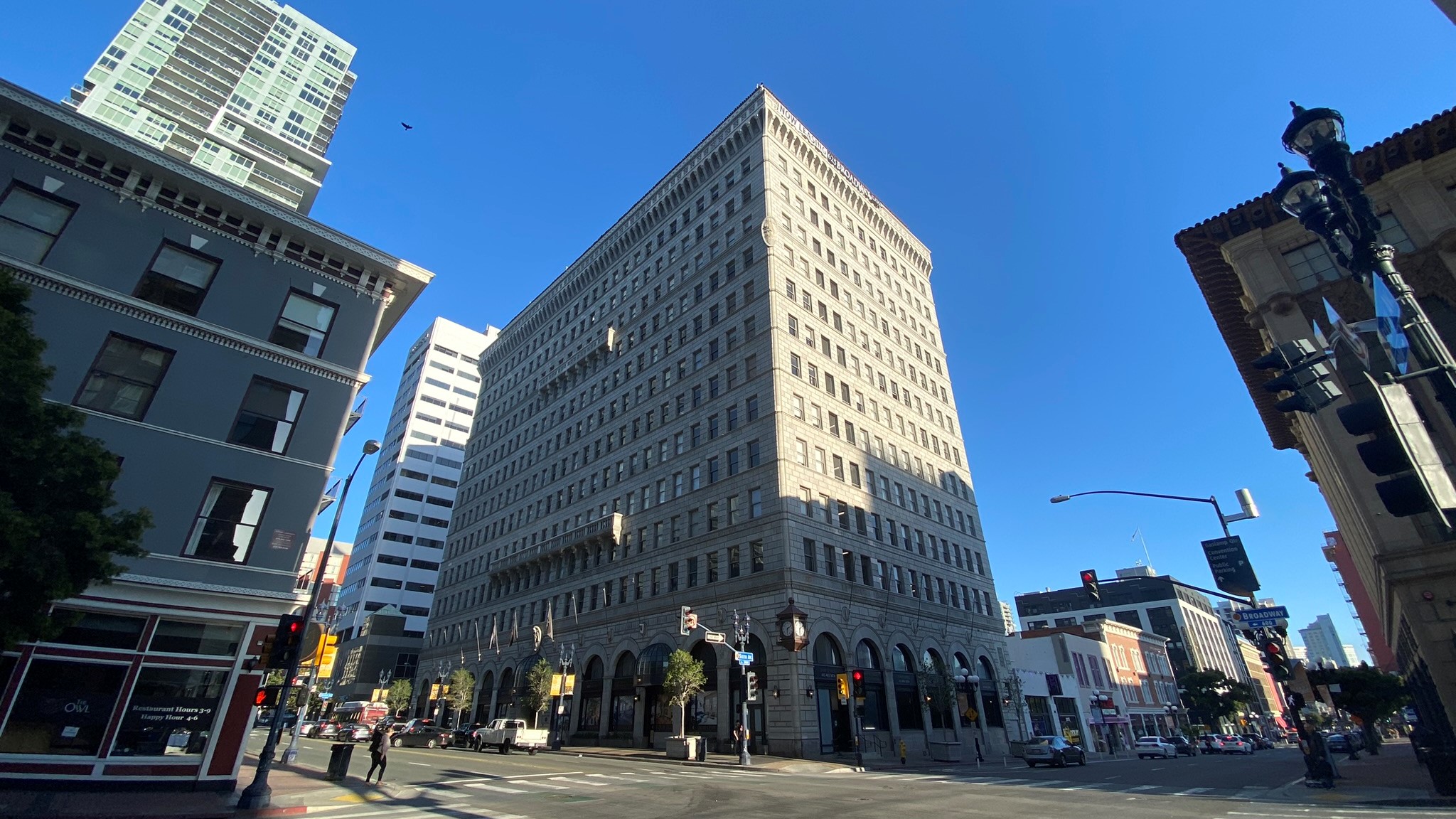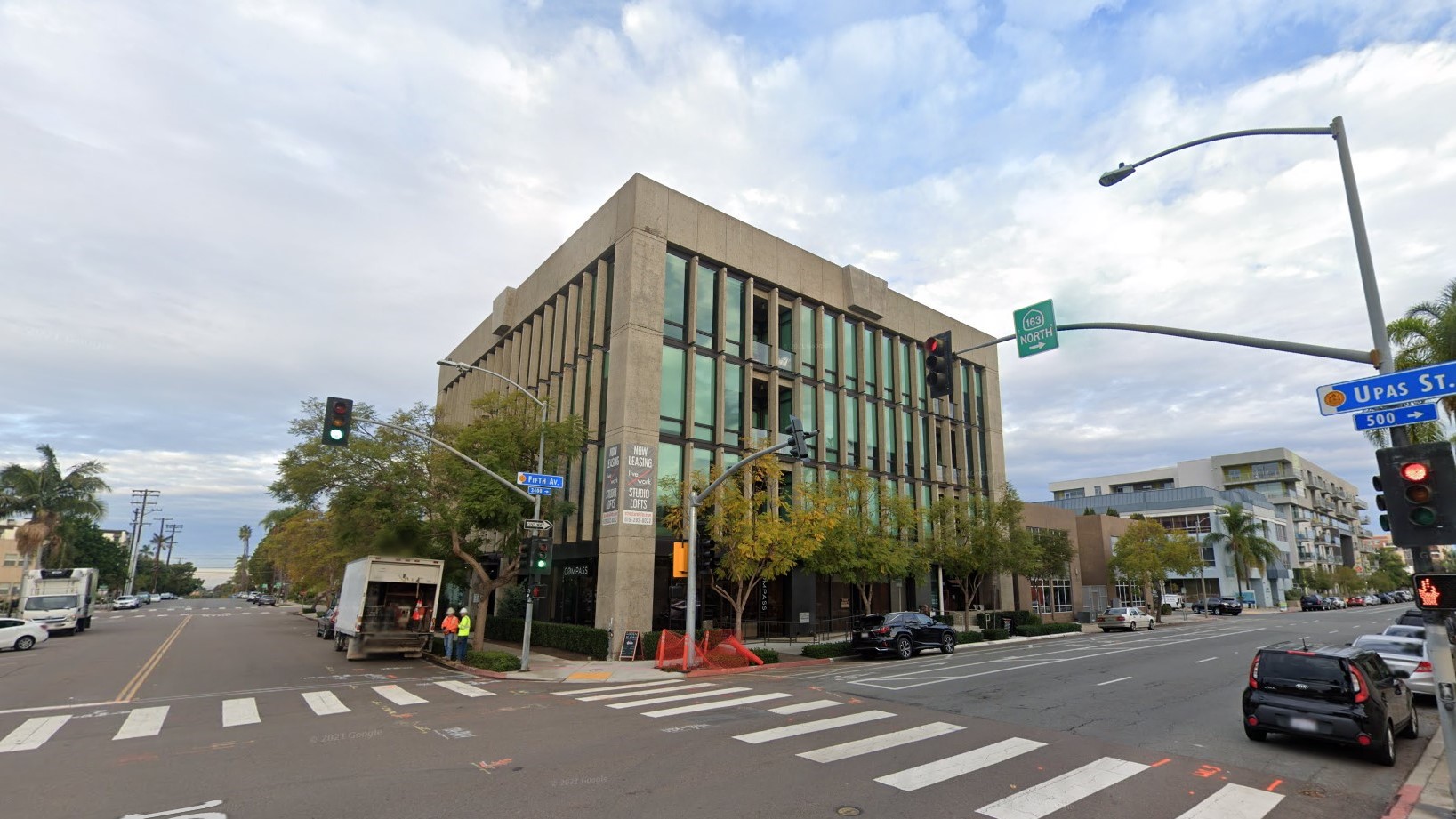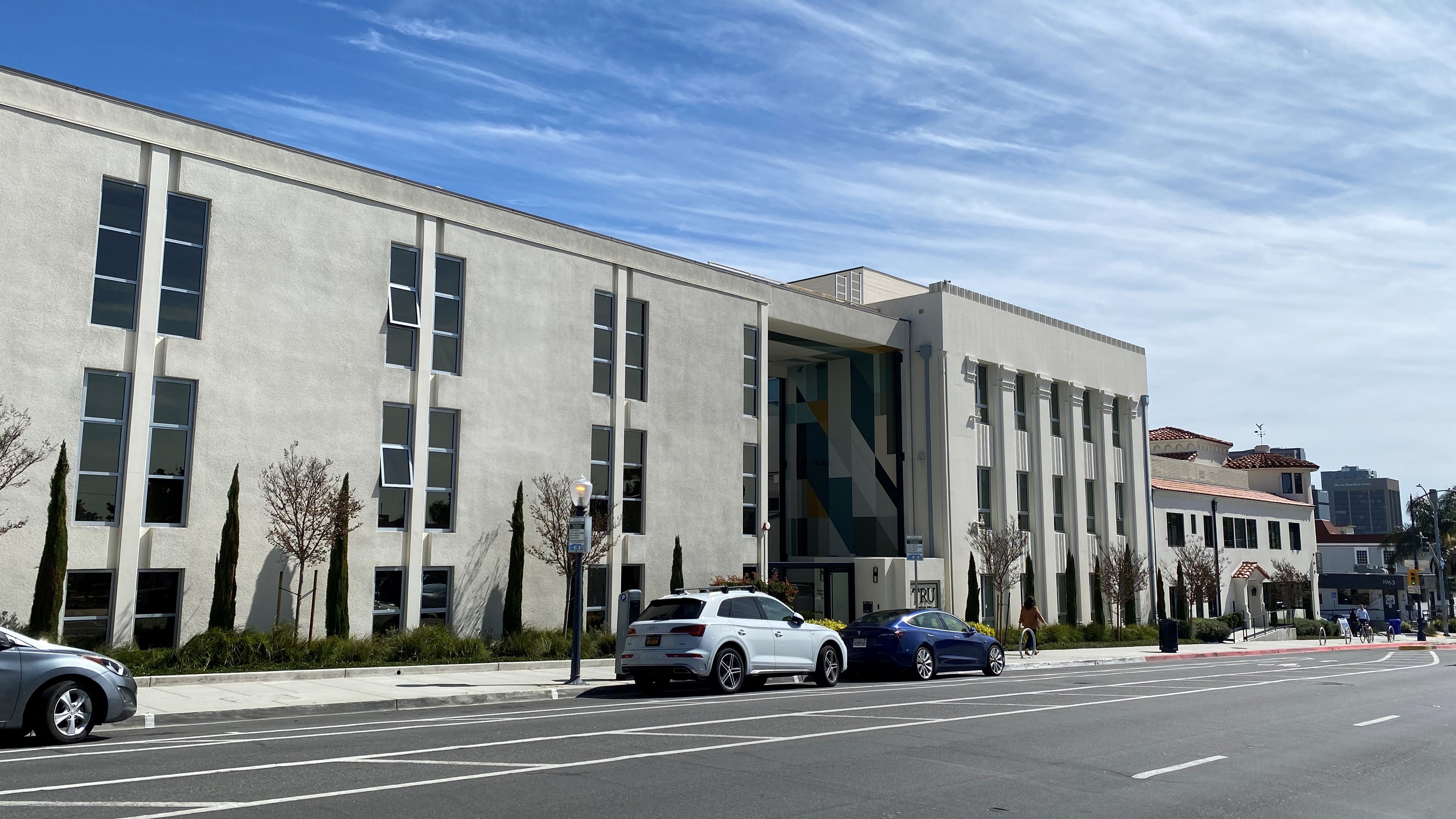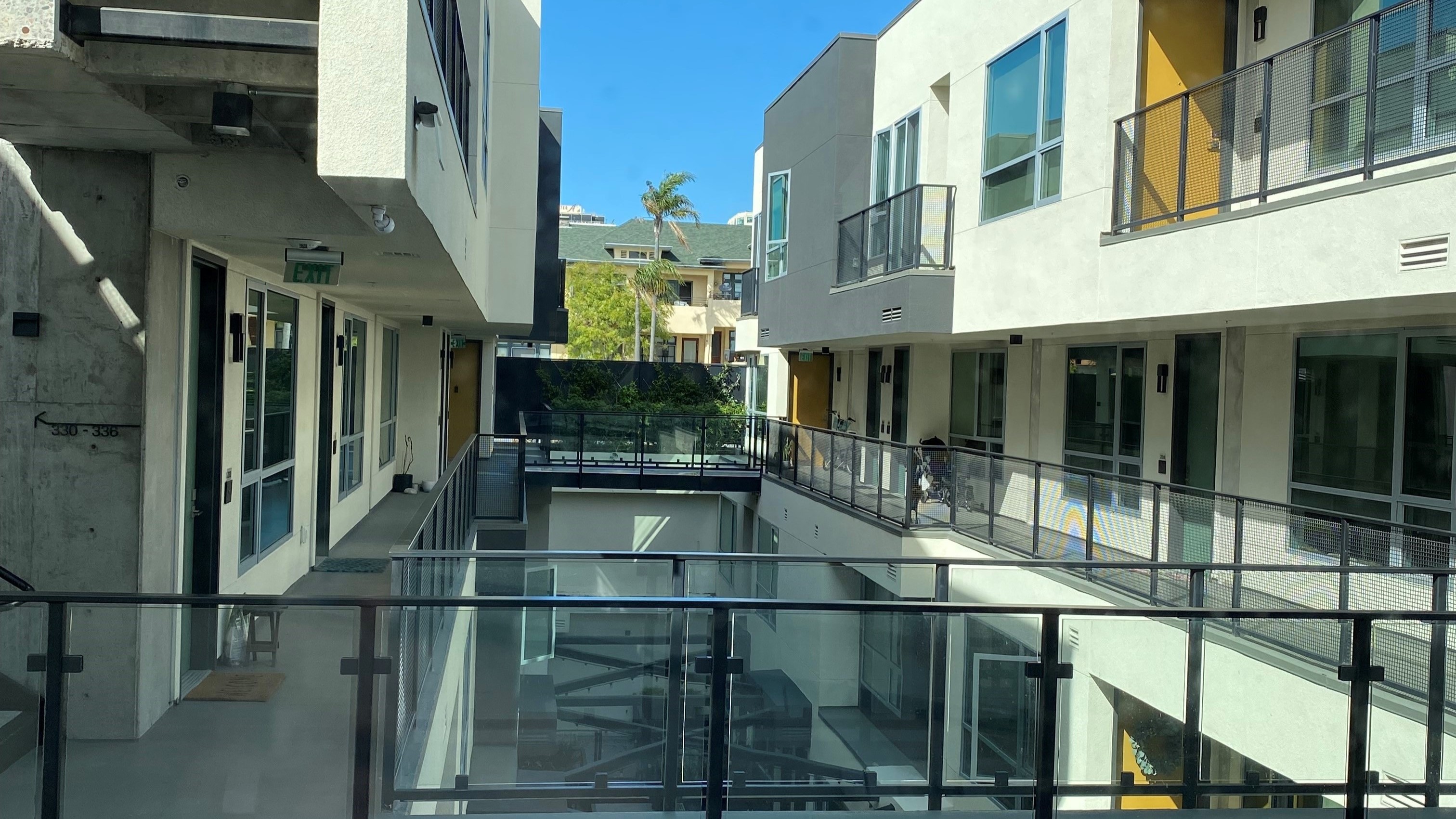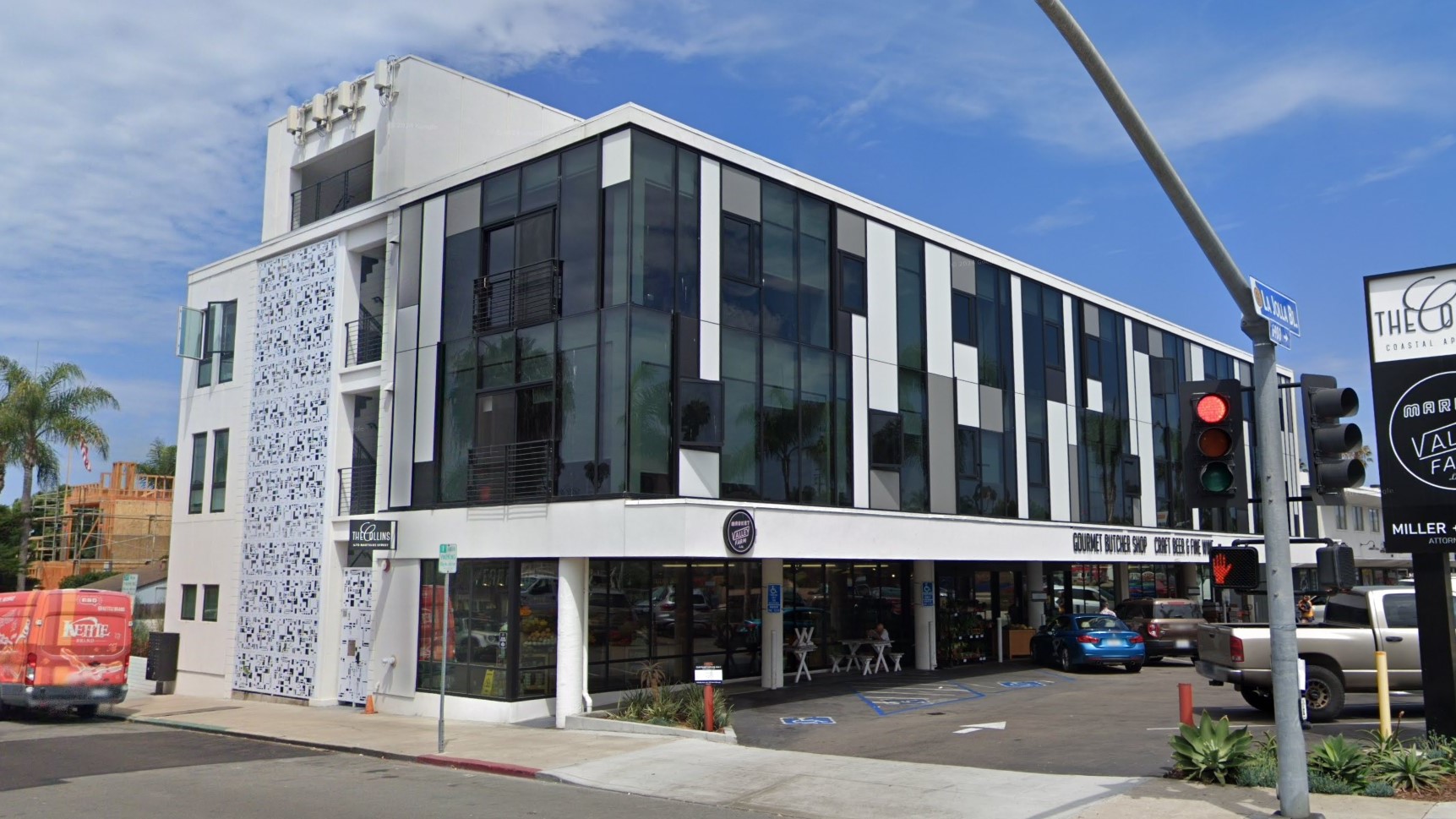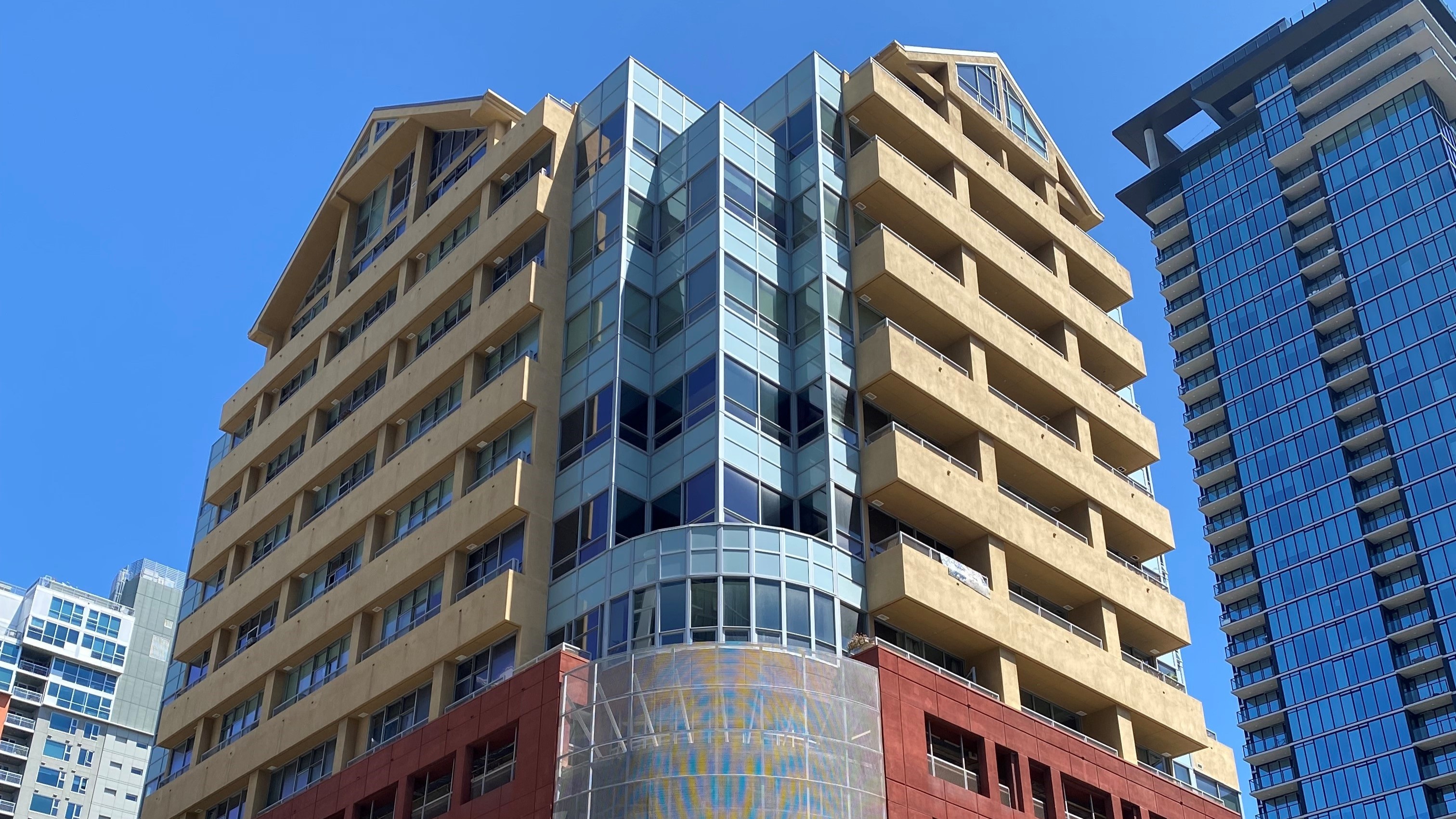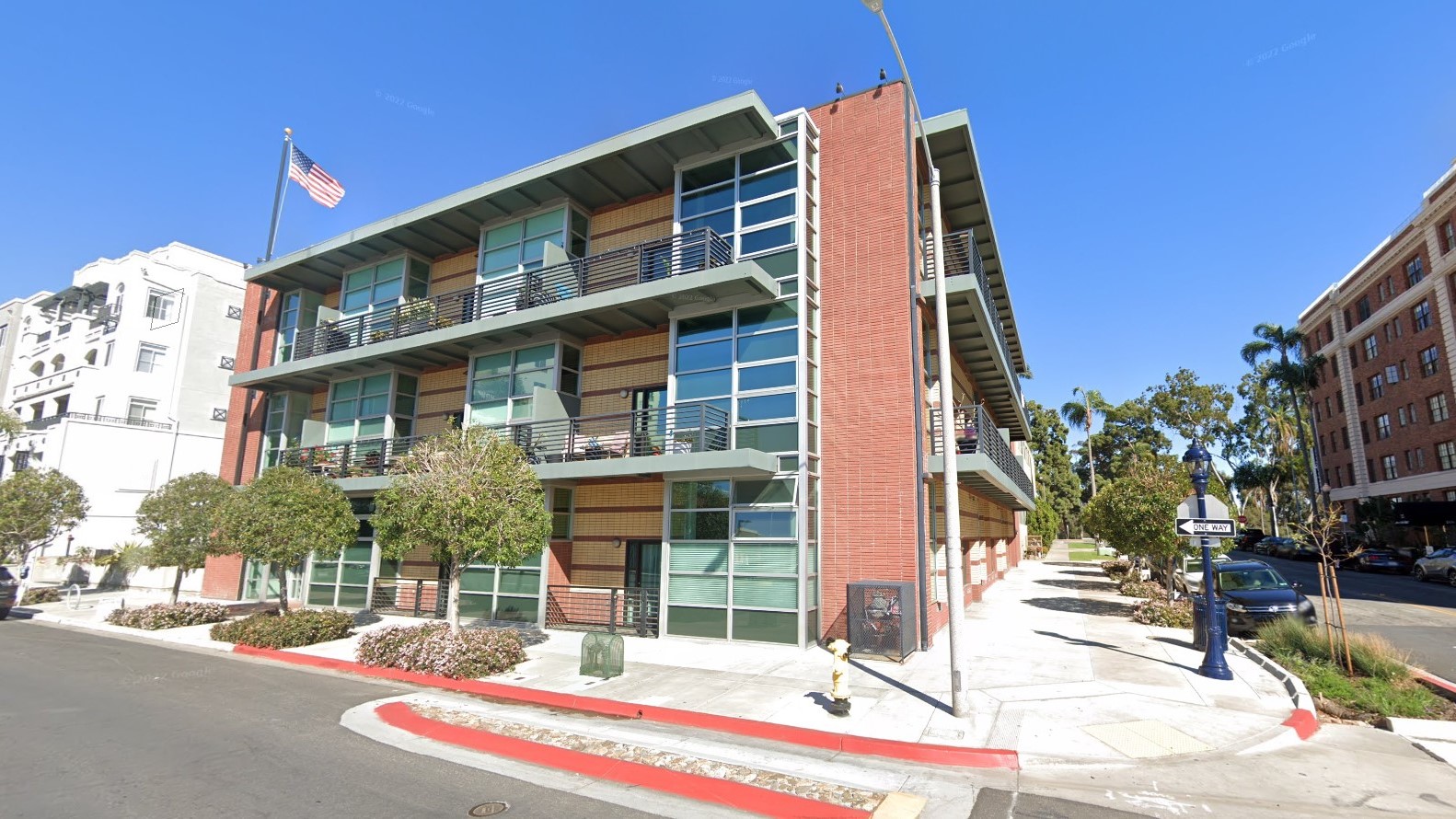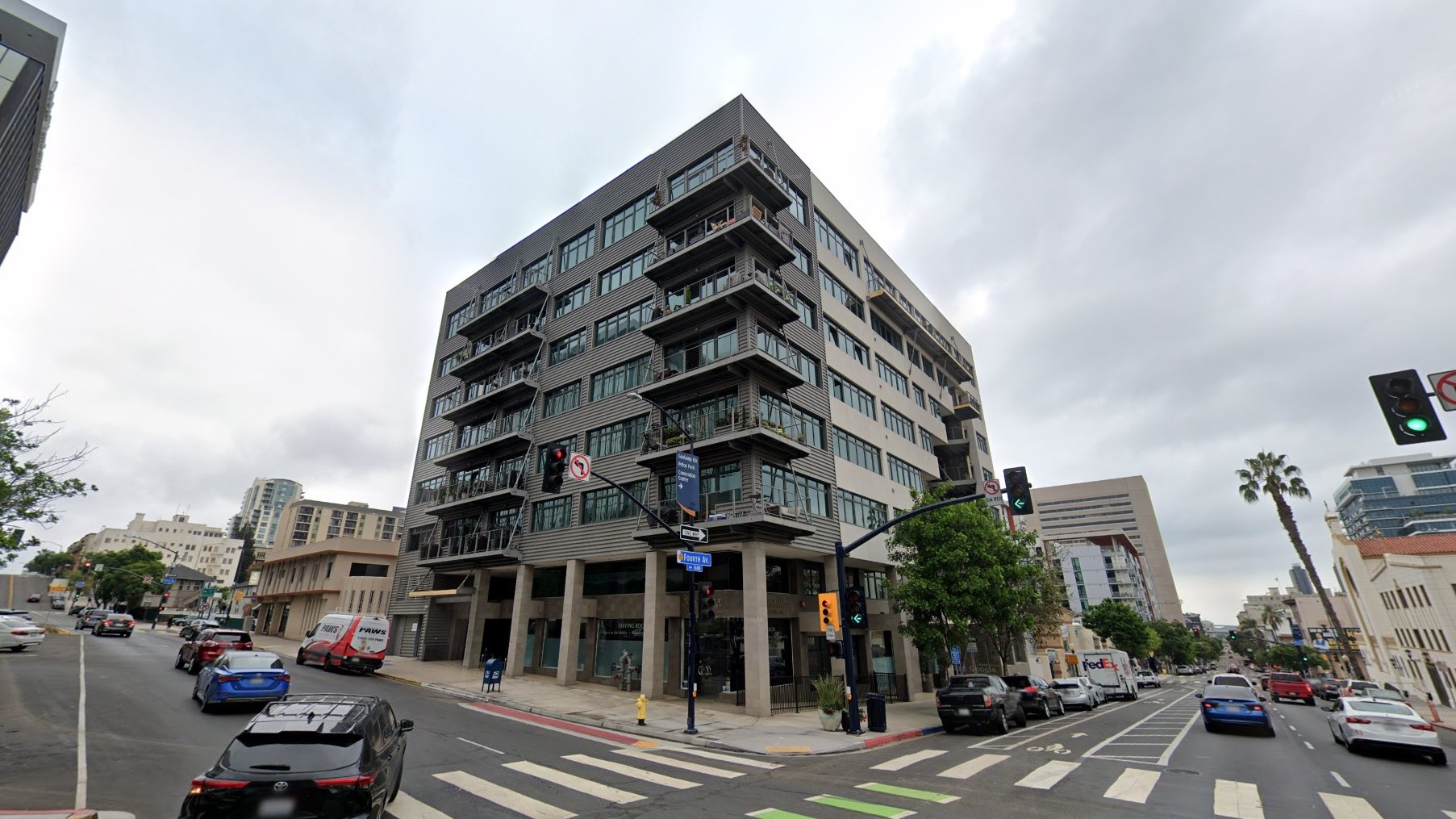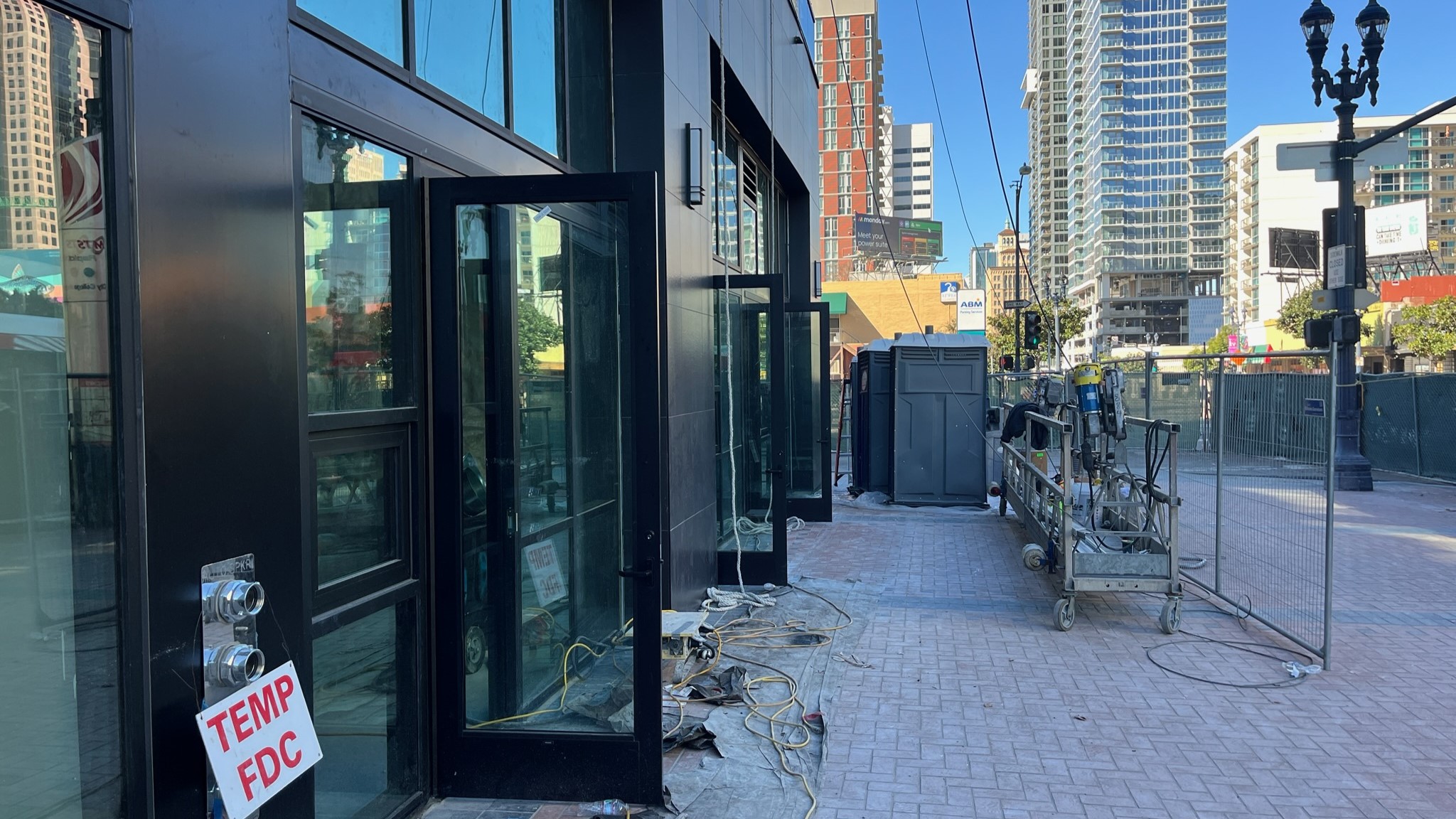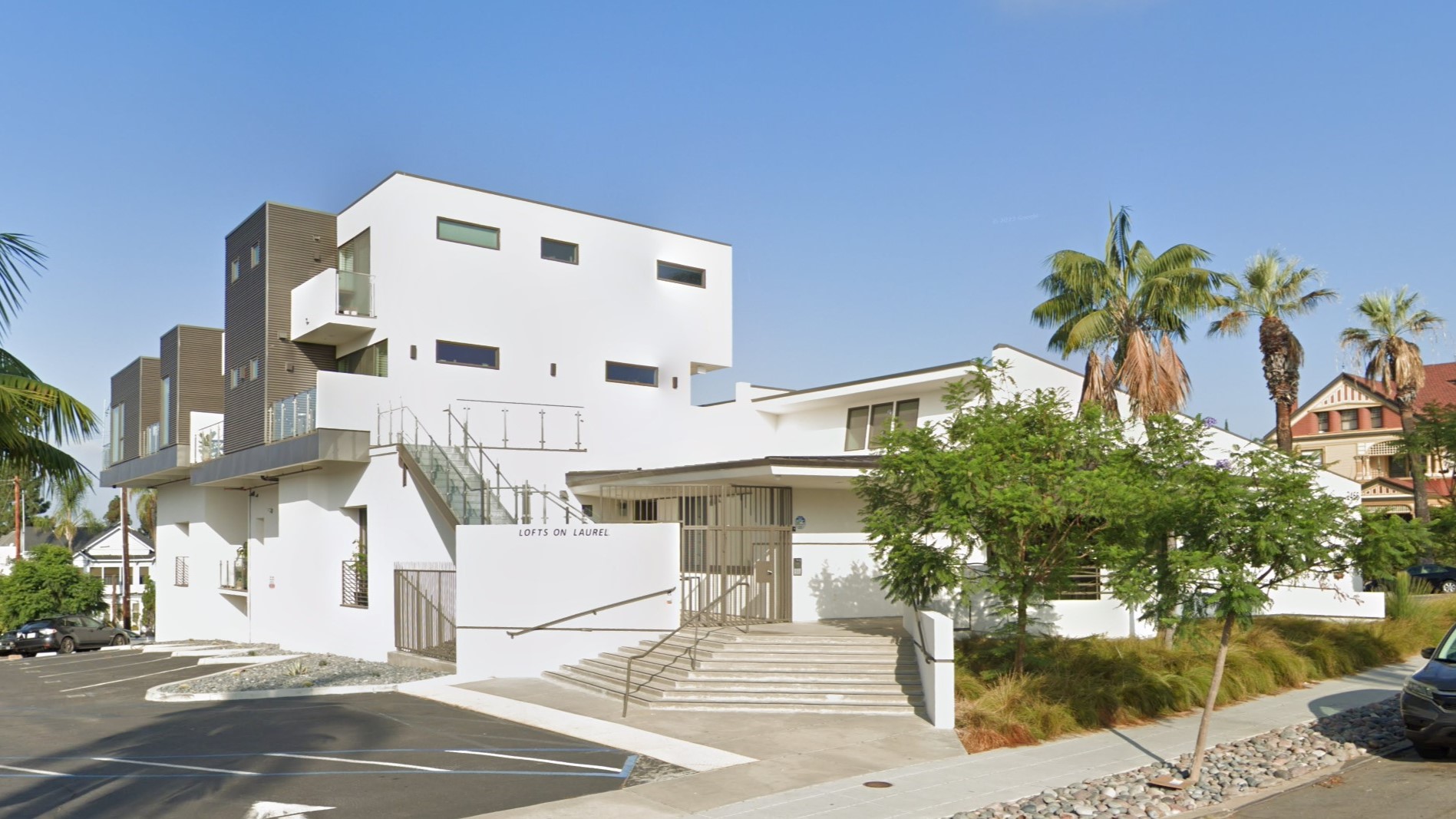Office to Residential Conversions
The conversion of existing structures to residential uses is an important strategy for increasing San Diego's housing supply. Current land use programs and regulations allow for conversions by right in most areas of the City.
Land Use Information:
Building Code Information:
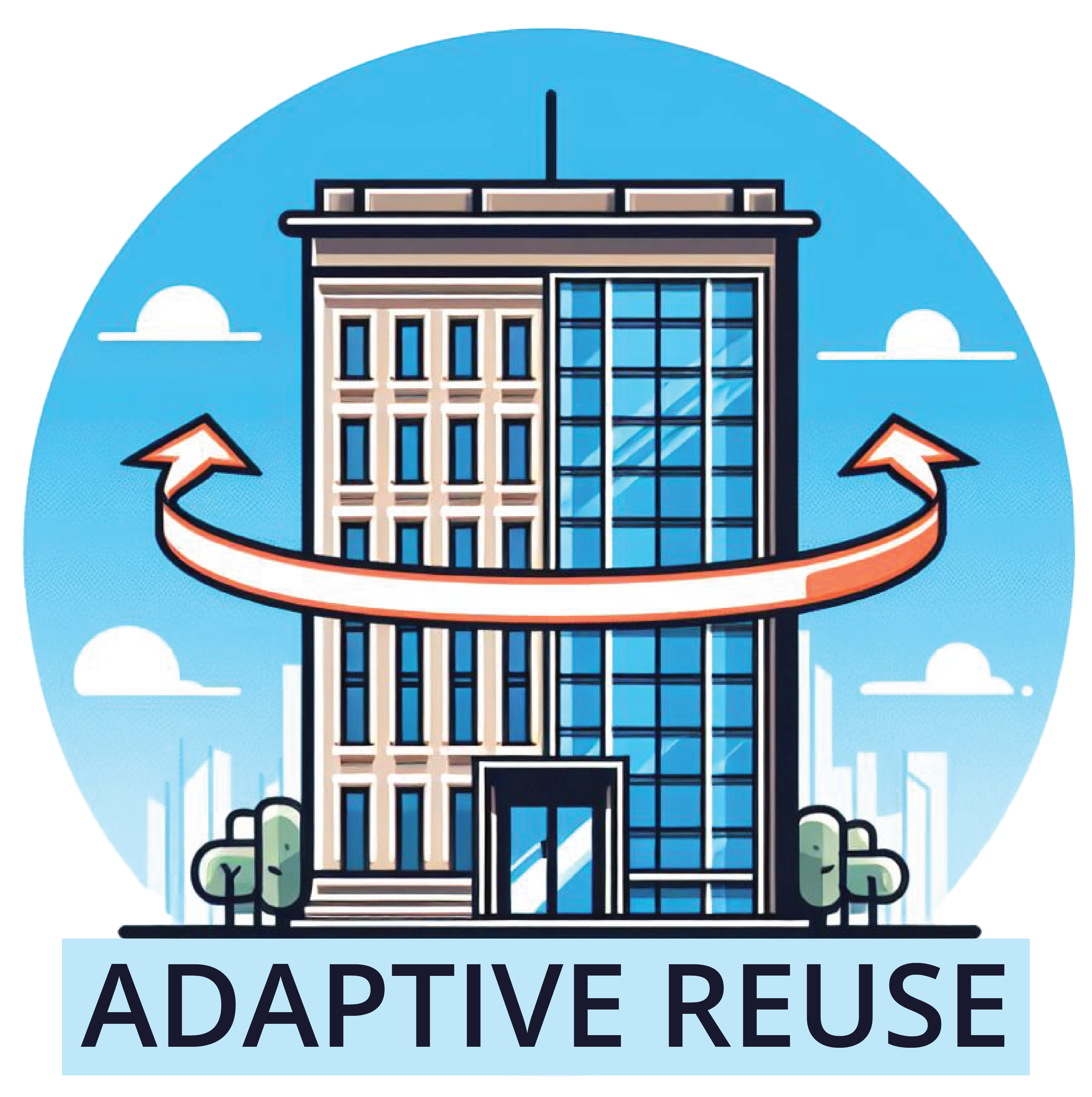
Site Eligibility
City of San Diego Zoning
Pursuant to the Land Development Code, conversion of an existing building to residential is allowed where Multiple Dwelling Units are identified as a Permitted Use. These zones include:
- RM
- CN
- CR-1
- CO-2
- CO-3
- CV-1
- CC-1
- CC-3
- CC-4
- CC-5
- IP-3
- RMX
- EMX
- Carmel Valley Planned District: MF, NC, VC, TC, MC
- Cass Street Commercial Planned District: All
- Central Urbanized Planned District: CU
- Centre City Planned District (Downtown): All
- Gaslamp Quarter Planned District: Above or below the first floor
- La Jolla Planned District: Zones 1-5
- La Jolla Shores Planned District: MF, V, CC
- Mission Beach Planned District: R-N, R-S, NC, VC
- Old Town Planned District: OTRM, OTCC-2, OTCC-3, OTMCR
In addition to the zones listed above, the City's Affordable Housing in All Communities program offers further flexibility, allowing qualified residential conversions on sites not zoned for Multiple Dwelling Units.
Note: Development regulations vary based on zone. For additional information specific to your site, please contact a planner or submit for a Preliminary Review.
State Programs
Furthermore, a number of state programs allow for the conversion of existing structures to residential uses by right. These include SB 6, AB 2011, AB 1490, and SB 4. Additional information is available by clicking on each respective tile below.
Frequently Asked Questions
How can I obtain information specific to my project before submitting for a permit?
Please submit for a Preliminary Review to obtain project-specific information on the regulations that apply to your project, the permits you must obtain, the review process that applies to your development, and interpretations on how the City will apply code provisions to specific situations.
How can I obtain more support for my project throughout the permitting process?
Please email DSDMinisterialPM@sandiego.gov to inquire about potential eligibility for an "Active Project Manager" to help usher the project through the permit process. Additional fees may apply.
What are some topics to take into consideration when planning a residential conversion project?
Questions often arise regarding fire sprinklers, fire access, incorporation of water and sewer utilities, and historical resources. These items can be addressed prior to submitting a permit application through the Preliminary Review process.
Additional Resources
The following White Paper, published by the International Association of Plumbing and Mechanical Officials (IAPMO), explores how the Uniform Plumbing Code and Uniform Mechanical Codes impact construction affordability.
Note: This paper is being provided for informational purposes only.
Completed and In-Progress Conversions
Note: This page is not a substitute for, and may not always match, the current version of the regulations. Applicants should always refer to the San Diego Municipal Code when submitting development permit applications.
SB 6
Senate Bill (SB) 6, or the Middle Class Housing Act of 2022, allows for the development of residential or mixed-use projects on commercial properties where office, retail, or parking are permitted uses. The absence of requirements for SB 6 projects, in comparison to AB 2011, allows for market rate housing and/or mixed-use projects to be developed on commercially-zoned properties with the intent of increasing the overall supply of housing.
Applies to:
- Multi-family housing developments that are 100% residential or mixed-use
- Properties within the Coastal Zone
Requirements:
- For mixed-use developments, residential units must occupy at least half of the total square footage
- Must include prevailing wages for construction workers
- Does not include affordability requirements
- Does not create a streamlined ministerial approval process
- Projects are not exempt from CEQA
For additional information on site criteria, eligibility, and other requirements for SB 6, please see the following resources, published by SANDAG:
AB 2011
For commercial sites where the zoning allows for offices, retail, or parking, Assembly Bill (AB) 2011 (also known as the High Road Jobs Act of 2022) creates a CEQA-exempt, ministerial approval process for multi-family housing developments that are 100% residential or mixed-use.
Applies to:
- Multi-family housing developments that are 100% residential or mixed-use
- Properties within the Coastal Zone
Requirements:
- Must include an affordability component
- For mixed-use developments, residential units must occupy at least two-thirds of the total square footage
- Must include prevailing wages for construction workers. Projects with more than 50 units must meet additional labor standards, including apprenticeships, health care, and other administrative requirements.
For additional information on site criteria, eligibility, and other requirements for SB 6, please see the following resources, published by SANDAG:
AB 1490
AB 1490 makes extremely affordable adaptive reuse projects an allowable use and creates an expedited review process for those projects.
Applies to:
- Existing residential or commercial buildings that currently allow temporary dwelling or occupancy
Requirements:
- The development is a multifamily housing project
- The development involves the creation of new residential units through the retrofitting and repurposing of the existing building
- The development will be entirely within the envelope of the existing building
- The development is not on or adjacent to a site where more than 1/3 of the area is dedicated to industrial uses
- The development does not eliminate any existing open space on the parcel
- 100% of the units (excluding managers units) shall be dedicated to lower income households
- At least 50% of the units shall be dedicated to very low income households
- For developments of 50 units or more, the development shall provide onsite management services
Projects brought pursuant to this program shall be reviewed within:
- 60 days, for developments of 150 units or fewer
- 90 days, for developments of more than 150 units
SB 4
SB 4 allows affordable housing development by right on land owned by “independent institutions of higher education” or “religious institutions,” subject to certain criteria. These projects can include qualifying ground-floor commercial, childcare, and community center uses, or specified uses that already existed on-site, depending on the zone. Sunsets at the end of 2035.
Applies to:
- Sites in any zone that are owned by an independent institution of higher education or religious institution
Requirements:
- 100% of the units must be reserved as affordable for lower income households
- Up to 20% of the units may be for moderate income households
- Up to 5% of the units may be for staff of the educational or religious institution
- Prevailing wages for construction workers for projects of more than 10 units, with additional labor standards applying to projects of 50 or more units
Allowable densities:
- Residential Zones: 30 units/acre and a height one story above the maximum, or a greater density/height if allowed on an adjoining parcel
- Non-Residential Zones: 40 units/acre and a height one story above the maximum, or a greater density/height if allowed on an adjoining parcel
Approval or written comments for projects brought pursuant to this program shall be provided within:
- 60 days, for developments of 150 units or fewer
- 90 days, for developments of more than 150 units
NOTE: Most of the sites covered by this bill are already eligible for the existing “Affordable Housing in All Communities” program (SDMC sections 143.0746(a) and (b)). That program allows 100% affordable housing projects in High or Highest Resource CTCAC Areas and 25% affordable housing projects developed by a public agency or "qualified non-profit"/501(c)(3) organization, which includes religious, charitable, scientific, literary or educational purposes, in Mobility Zones 1, 2, or 3. This bill would only create new opportunities for those locations not covered by the existing Affordable Housing in All Communities Program, subject to the criteria in the bill.


